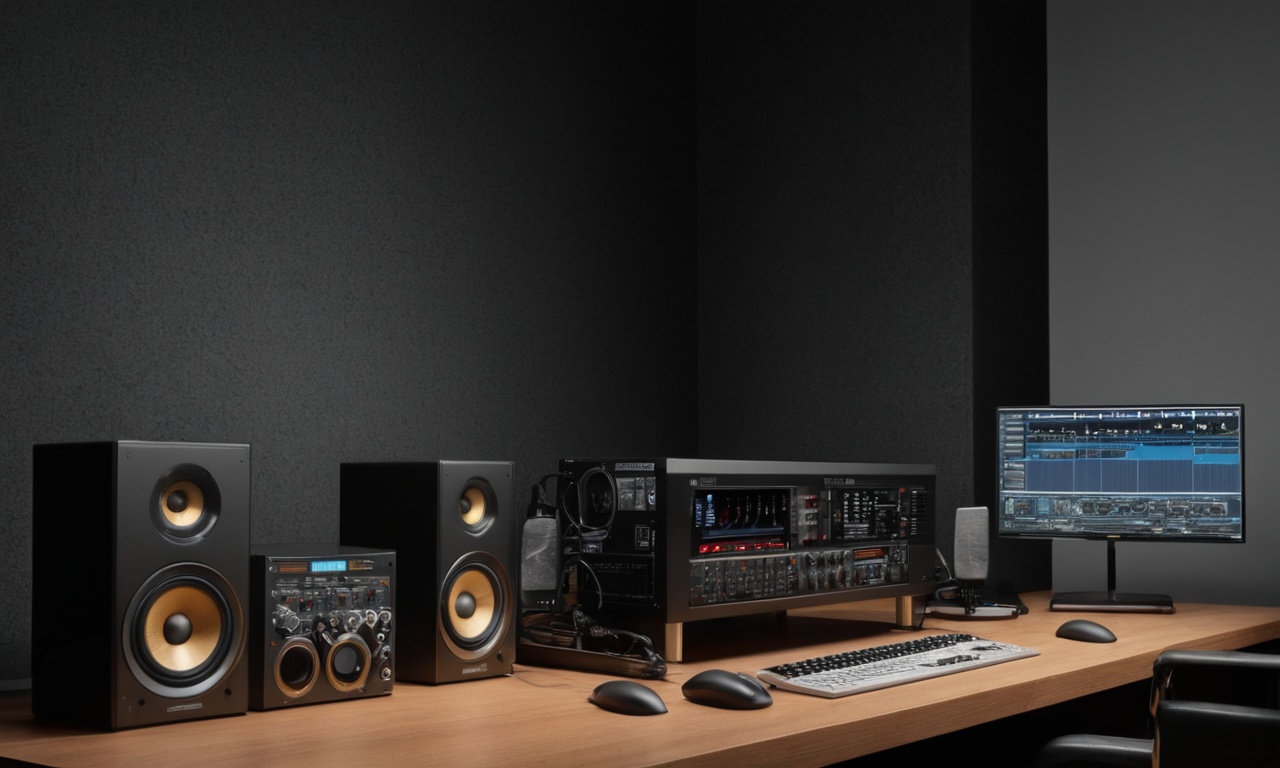Choosing the right audio format can significantly impact your file size, quality, and compatibility. Whether you're processing audio with BahaaSR or working on other audio projects, understanding the differences between popular formats is crucial for making informed decisions.
Understanding Audio Compression
Before diving into specific formats, it's important to understand the two main types of audio compression:
🔄 Lossy Compression
Reduces file size by permanently removing some audio data that the human ear might not notice. Examples: MP3, AAC, OGG.
📁 Lossless Compression
Reduces file size without losing any audio data. The original quality can be perfectly reconstructed. Examples: FLAC, WAV, ALAC.
MP3: The Universal Standard
MP3 remains the most widely used audio format, and for good reason:
✅ Advantages:
- Universal Compatibility: Supported by virtually every device and platform
- Small File Size: Excellent compression ratios
- Good Quality: Acceptable quality for most listening scenarios
- Fast Processing: Quick to encode and decode
- Streaming Friendly: Ideal for online distribution
❌ Disadvantages:
- Lossy Compression: Some audio quality is permanently lost
- Generation Loss: Quality degrades with each re-encoding
- Limited Metadata: Fewer options for tags and information
MP3 Specifications:
- Bitrates: 32-320 kbps (VBR and CBR)
- Sample Rates: 8-48 kHz
- Channels: Mono, stereo, joint stereo
- File Extension: .mp3
WAV: The Professional Standard
WAV (Waveform Audio File Format) is Microsoft's standard for uncompressed audio:
✅ Advantages:
- Lossless Quality: Perfect audio reproduction
- Professional Standard: Industry standard for recording and mastering
- No Compression Artifacts: Pure, unaltered audio
- Wide Compatibility: Supported by professional audio software
- High-Resolution Support: Supports various bit depths and sample rates
❌ Disadvantages:
- Large File Sizes: Significantly larger than compressed formats
- Storage Requirements: Demands more disk space and bandwidth
- Slower Transfer: Takes longer to upload/download
- Limited Metadata: Basic tagging capabilities
WAV Specifications:
- Bit Depths: 8, 16, 24, 32-bit
- Sample Rates: 8-192 kHz (commonly 44.1, 48, 96 kHz)
- Channels: Mono to multi-channel surround
- File Extension: .wav
FLAC: The Best of Both Worlds
FLAC (Free Lossless Audio Codec) offers lossless compression with reasonable file sizes:
✅ Advantages:
- Lossless Compression: Perfect quality with 50% size reduction
- Open Source: Free and patent-free
- Rich Metadata: Extensive tagging capabilities
- Error Detection: Built-in integrity checking
- Archival Quality: Perfect for long-term storage
❌ Disadvantages:
- Limited Compatibility: Not supported by all devices
- Larger Than MP3: Still bigger than lossy formats
- Processing Power: Requires more CPU for encoding/decoding
FLAC Specifications:
- Bit Depths: 4-32 bits per sample
- Sample Rates: 1-655,350 Hz
- Channels: Up to 8 channels
- File Extension: .flac
"The choice of audio format should always depend on your specific use case: MP3 for distribution, WAV for professional work, and FLAC for archiving."
Format Comparison Chart
| Format | Quality | File Size | Compatibility | Best Use Case |
|---|---|---|---|---|
| MP3 | Good (lossy) | Small | Excellent | Streaming, distribution |
| WAV | Perfect (lossless) | Large | Good | Recording, mastering |
| FLAC | Perfect (lossless) | Medium | Limited | Archiving, high-quality playback |
When to Use Each Format
🎵 Use MP3 When:
- Distributing music online
- Streaming or podcasting
- Storage space is limited
- Maximum compatibility is needed
- Casual listening on mobile devices
🎙️ Use WAV When:
- Recording in the studio
- Professional audio editing
- Mastering and post-production
- Working with audio processing tools like BahaaSR
- Creating high-quality masters
💎 Use FLAC When:
- Archiving your music collection
- Audiophile listening setups
- Preserving original quality with compression
- Long-term storage of important recordings
- Converting between formats multiple times
Audio Processing Considerations
When using tools like BahaaSR for silence removal, format choice affects:
Processing Quality
Starting with lossless formats (WAV, FLAC) ensures the best processing results. The algorithm can work with the full audio data without compression artifacts.
Processing Speed
Compressed formats may process faster due to smaller file sizes, but decompression adds CPU overhead.
Output Quality
Processing a lossy format and re-encoding it will result in additional quality loss. For best results, process lossless sources when possible.
Future Audio Formats
The audio format landscape continues to evolve:
- Opus: Modern, efficient codec for streaming
- MQA: High-resolution audio for streaming
- Spatial Audio: Immersive audio experiences
- AI-Enhanced Formats: Smart compression using machine learning
Recommendations
🎧 For Audiophiles
Use FLAC for your main collection, convert to MP3 for portable devices.
🎵 For Musicians
Record in WAV, archive important projects in FLAC, distribute in MP3.
📱 For Casual Listeners
MP3 at 256-320 kbps provides excellent quality-to-size ratio.
Conclusion
Each audio format serves a specific purpose in the digital audio ecosystem. MP3 excels in distribution and compatibility, WAV provides uncompromised quality for professional work, and FLAC offers the perfect balance for archiving and high-quality playback.
When processing audio with tools like BahaaSR, starting with the highest quality format available will ensure the best results. The tool supports all major formats, automatically handling the technical details while preserving your audio's integrity.
Ready to process your audio files? Upload your audio in any format and experience professional-quality silence removal.
